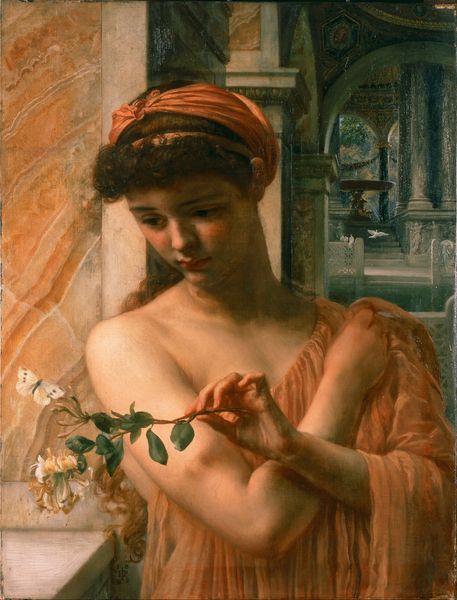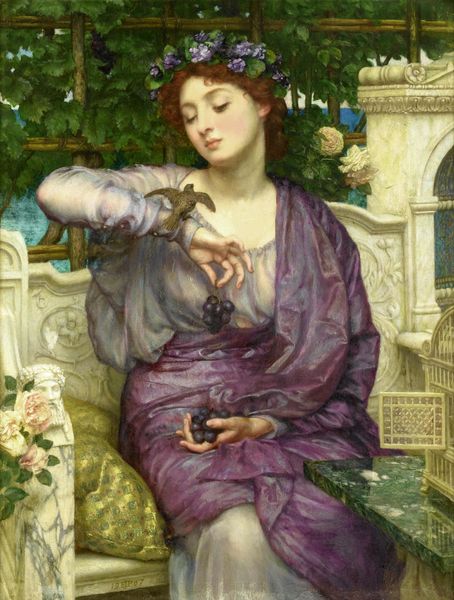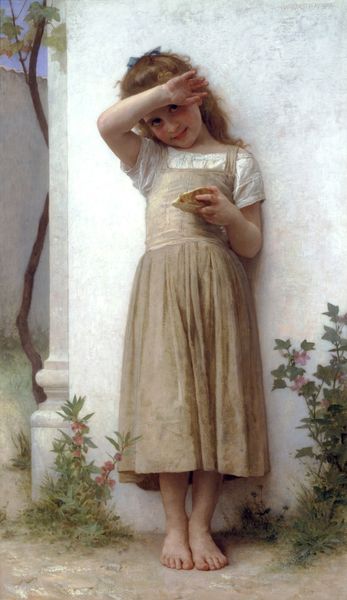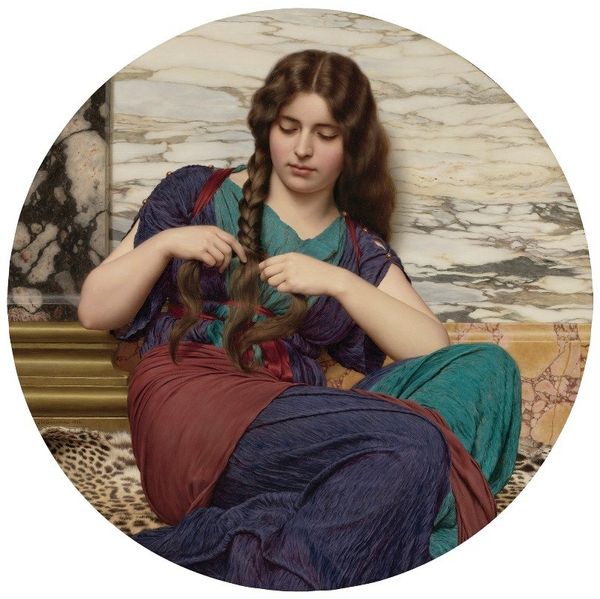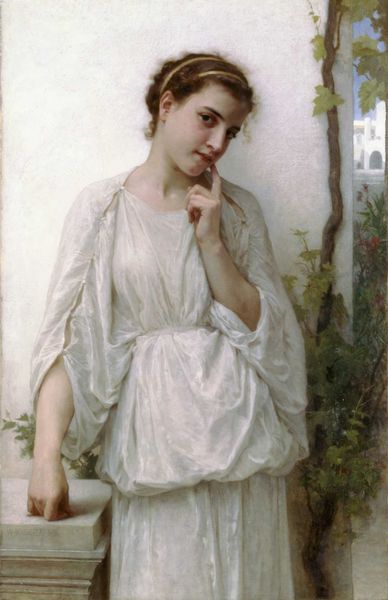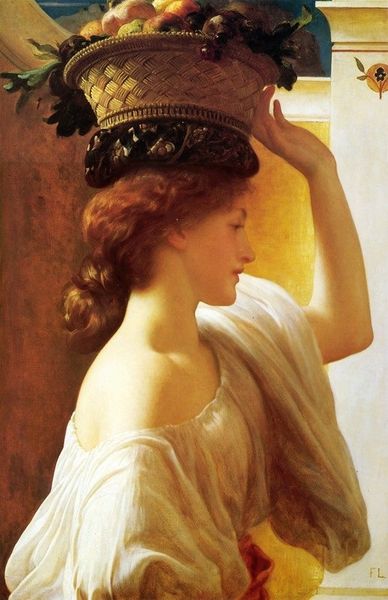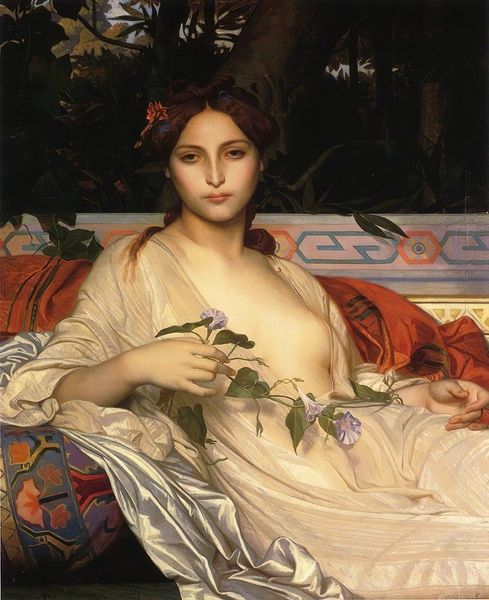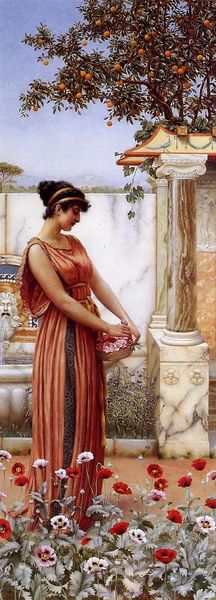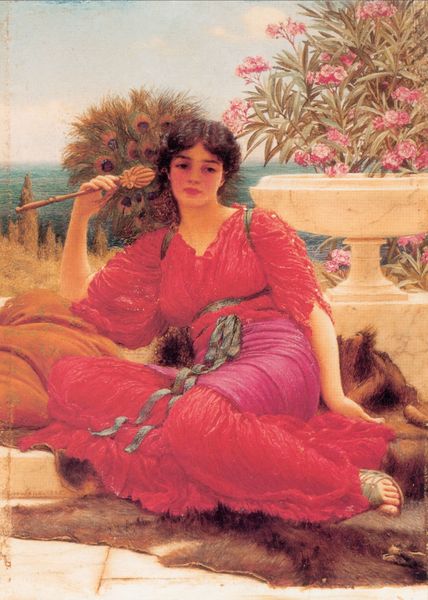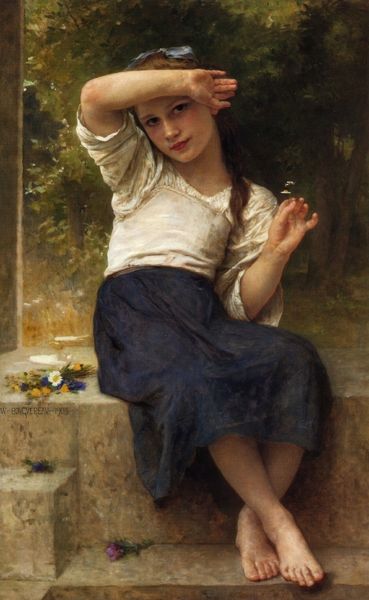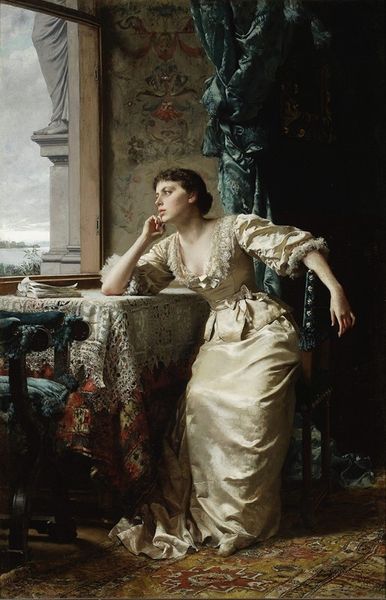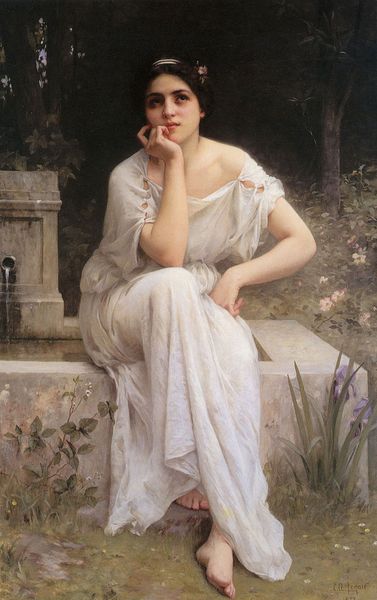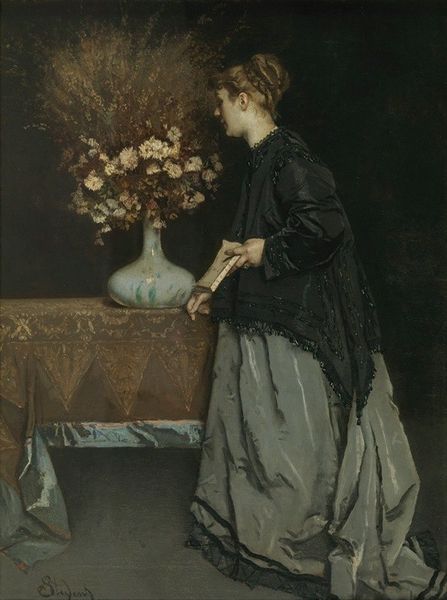
Copyright: Public Domain: Artvee
Editor: We're looking at "Weaving the Wreath" by Frederic Leighton, painted around 1872. It's an oil painting depicting a woman adorned with a laurel wreath. The texture of her velvet robe is striking, and there's a quiet solemnity to the whole composition. What are your initial thoughts on the painting's formal qualities? Curator: The work presents an intriguing study in contrasts. Note the interplay between the tactile opulence of the velvet robe and the smooth, almost porcelain, quality of the figure's skin. Leighton is masterfully manipulating texture to direct our gaze. The restrained color palette, dominated by muted greens and creams, also contributes to the overall somber, contemplative mood. What does the symmetrical composition suggest to you? Editor: I hadn't considered the symmetry explicitly, but now that you mention it, it does reinforce that sense of stillness. The figure is centered, and the background architectural elements seem to mirror each other. Is that contributing to the feeling that very little is happening? Curator: Precisely. This controlled stasis compels us to focus on minute details. Examine, for example, how Leighton utilizes light. Notice how the subtle gradations of tone define the form of her face, drawing our attention to her downcast eyes. This encourages a focused reading, doesn't it? Do you find any imbalance? Editor: Well, now that you mention the controlled symmetry, the wreath is asymmetrical, falling off to one side of her head, and the lemon is over on the left of the base where she is sitting, adding a dynamic sense. The tension prevents it from being simply a pretty portrait. It gives the viewer an entry into thinking about the figure. Curator: I agree entirely. The subtle asymmetry disrupts any potential monotony, reminding us of the organic, imperfect nature of beauty itself. These careful compositional strategies create the beautiful tension. It is not perfect, but a fragment, drawing the viewer into the artwork to discover what lies beyond the perfect form. Editor: So by using a relatively simple composition, Leighton has created a much deeper artwork. I see that I hadn't given this work its full due!
Comments
No comments
Be the first to comment and join the conversation on the ultimate creative platform.
